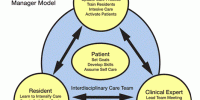Active children are more resilient in many parts of their lives. Regular physical activity has several physical, mental, and emotional benefits that aid with resilience. The school year has only just begun, but the first tests are already approaching. Schoolchildren who get lots of daily activity, according to study from the University of Basel, manage better with stress.
“Get some exercise!” When adults complain about stress in their life, this is one suggestion they regularly hear. Exercise relieves stress. Does this, however, extend to children? Does exercise help them deal with the pressures of schoolwork? Dr. Manuel Hanke and Dr. Sebastian Ludyga of the Department of Sport, Exercise, and Health recently investigated the impact of physical activity on children’s stress levels. Their findings have been published in the Journal of Science and Medicine in Sports.
They had 110 children between the ages of 10 and 13 wear a sensor that tracked their everyday movement for a week for their study. The participants were subsequently brought into the lab on two separate occasions to complete a stressful task and a non-stressful control task (see box). The concentration of the stress hormone cortisol in the children’s saliva was used to assess their physical stress response.
We wanted to see if physical activity makes children more resilient in a laboratory setting. The findings revealed that children who had more than an hour of exercise per day, as recommended by the World Health Organization (WHO), produced less cortisol in the stress task than children who were less active.
Sebastian Ludyga
Less cortisol in active children
“We wanted to see if physical activity makes children more resilient in a laboratory setting,” says study director Sebastian Ludyga. The findings revealed that children who had more than an hour of exercise per day, as recommended by the World Health Organization (WHO), produced less cortisol in the stress task than children who were less active.
“Regularly active children appear to have a reduced physiological stress reaction in general,” says the study’s lead author, Manuel Hanke. Even in the control test, which entailed an unknown scenario that was nonetheless somewhat disturbing for the participants, cortisol levels differed between more and less active youngsters – but average cortisol levels were lower than in the stress task.

Stress hormone levels increase during exercise
According to Sebastian Ludyga, one possible reason for this observation is that cortisol levels rise after exercise. “When children run, swim, climb, and so on on a regular basis, the brain learns to associate an increase in cortisol with something positive.” The body’s reaction usually includes a cognitive component: this positive association helps to keep cortisol levels from climbing too high in exam settings as well.”
Besides their analysis of the saliva samples, the researchers also examined cognitive reactions to the stress task by recording participants’ brainwaves via electroencephalogram (EEG). The team plans to analyze these data next. “Stress can interfere with thinking. Some of us are familiar with this in its most extreme form — a blackout,” Hanke explains. The team now aims to determine whether physical activity also has an influence on these cognitive effects of stress.
Methodology
The Trier Social Stress Test for Children was employed by the researchers for their study: participants read a tale with an open conclusion, then had five minutes to prepare before utilizing their notes to relate the rest of the story to a jury. What they didn’t realize was that the planning time had been purposefully kept so short that it would be insufficient. Their notes were mostly depleted after approximately a minute, but they still had five minutes to fill and come up with something on the spur of the moment.
This was followed by a seemingly simple math exercise in which participants were required to repeatedly reduce a high three-digit number by a specified value over the period of five minutes. The main source of stress in this activity is error, which requires the participant to resume the task from the beginning. The children had to read a tale in the control task, which was done separately, but they then addressed general questions about the story with a researcher without any pressure to succeed. The researchers obtained saliva samples at regular intervals before and after the tasks in both sessions to determine cortisol levels.
















